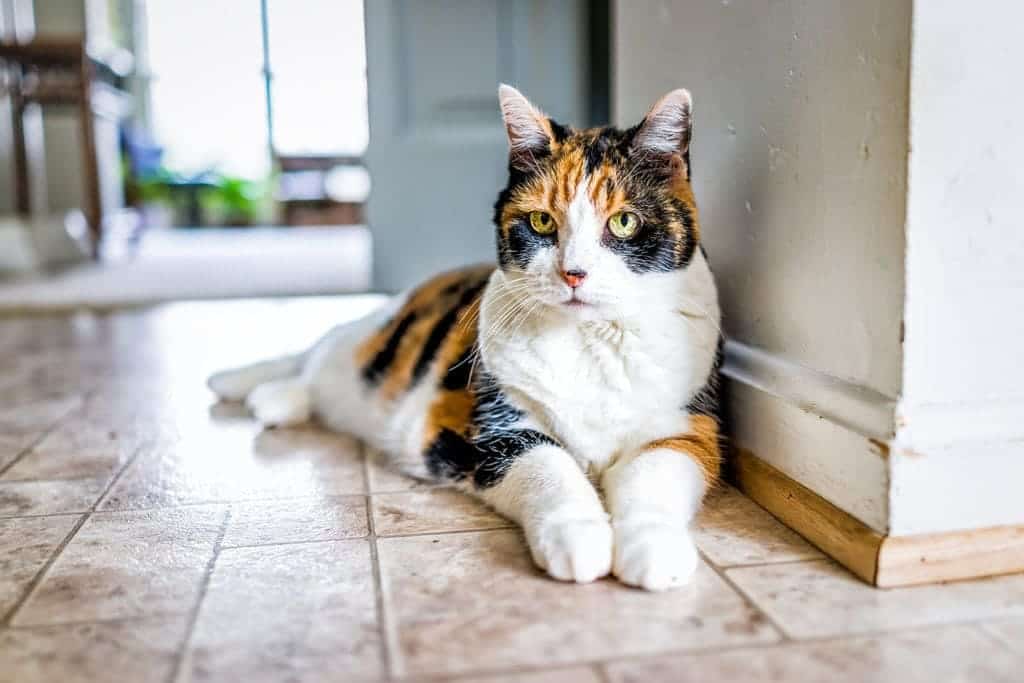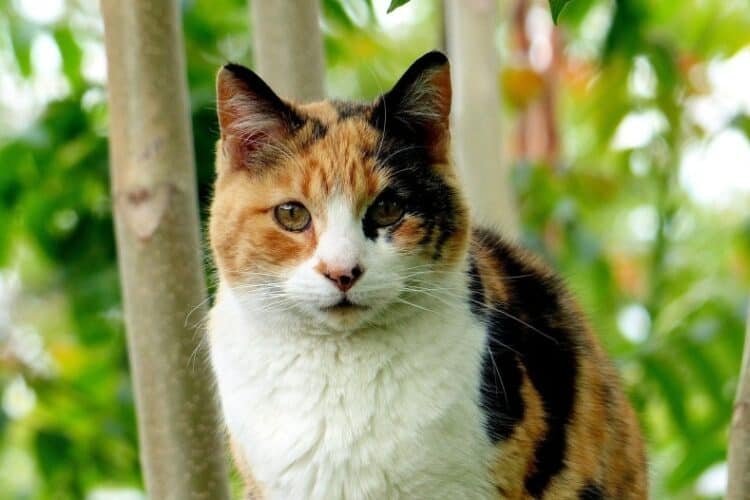Calico cats’ coloring patterns are so unique and eye-catching that it’s easy to assume that these cats must be rare. This is only partly true. While female calico cats aren’t so unusual, male calicoes are incredibly rare—a genetic anomaly, even! 99.9% of calico cats are female, so the chance of coming across a male calico is like finding a needle in a haystack.
This post is all about calico cats—how to identify them, what makes them special, and why male calicoes are so uncommon.
Is Calico a Breed?
Nope. Often mistaken for a breed, calico is a coat coloring pattern that can occur in a variety of cat breeds. A cat with a calico coat is tri-colored—often black and orange with white. For a cat to be considered calico, they must be partially white. Though typically otherwise black and orange, a range of color variations can also occur.
This includes faded variations of black and orange like gray or blue-gray instead of black or a tan, reddish-brown, or beige effect rather than bold orange. Calicoes with lighter or faded coat coloring are called “dilute calico”.
It can be difficult to tell the difference between calicoes and tortoiseshells, but one way to know what kind of coat coloring pattern your cat has is to check for the presence of white in the fur. Tortoiseshell coats are bi-colored and lack white, whereas calicoes have three colors including white.
Cats belonging to a multitude of breeds can have a calico coat coloring pattern. This includes:
- Maine Coon
- Persian
- Manx
- Scottish Fold
- Japanese Bobtail
- American Shorthair
- Siberian
- Arabian Mau
- Turkish Van
- Turkish Angora
- Norwegian Forest Cat
- Exotic Shorthair

Why Are Male Calicoes So Uncommon?
This is determined by the genetic makeup of female and male cats. For a cat to be calico, they must inherit two X chromosomes from their parents. One of these chromosomes must carry the orange color gene, whereas the other must carry the black color gene. They must also inherit the piebald chromosome for white to appear on their coat—this gene is carried by a separate chromosome.
Female cats inherit XX chromosomes, so it’s much more common for a female to be born calico. By contrast, males typically inherit one X chromosome and one Y chromosome, so they can’t be calico—unless they inherit XXY chromosomes. This happens very rarely, which is why it’s so unusual to come across a male calico cat—but it does happen. One in every 3,000 calicoes is male.
Though something of a genetic miracle, it’s not all smooth sailing for male calicoes. These cats are born with a condition called Klinefelter Syndrome and male cats born with it are infertile, so they can’t be bred.
Female cats with the calico coat pattern aren’t the most common type of cat, either, but they couldn’t really be called “rare”. The rarest cat color is albino, whereas black and brown tabbies are the most common.
Final Thoughts
So, it turns out that while female calico cats aren’t so rare, male calicoes most certainly are! This coat coloring pattern is so rare in males due to their genetic makeup and so, male calicoes are born only once in a while. If you’re considering adopting a calico, you shouldn’t have too much of an issue finding a gorgeous calico lady out there looking for a loving new home!
Featured Image Credit: Pixabay














